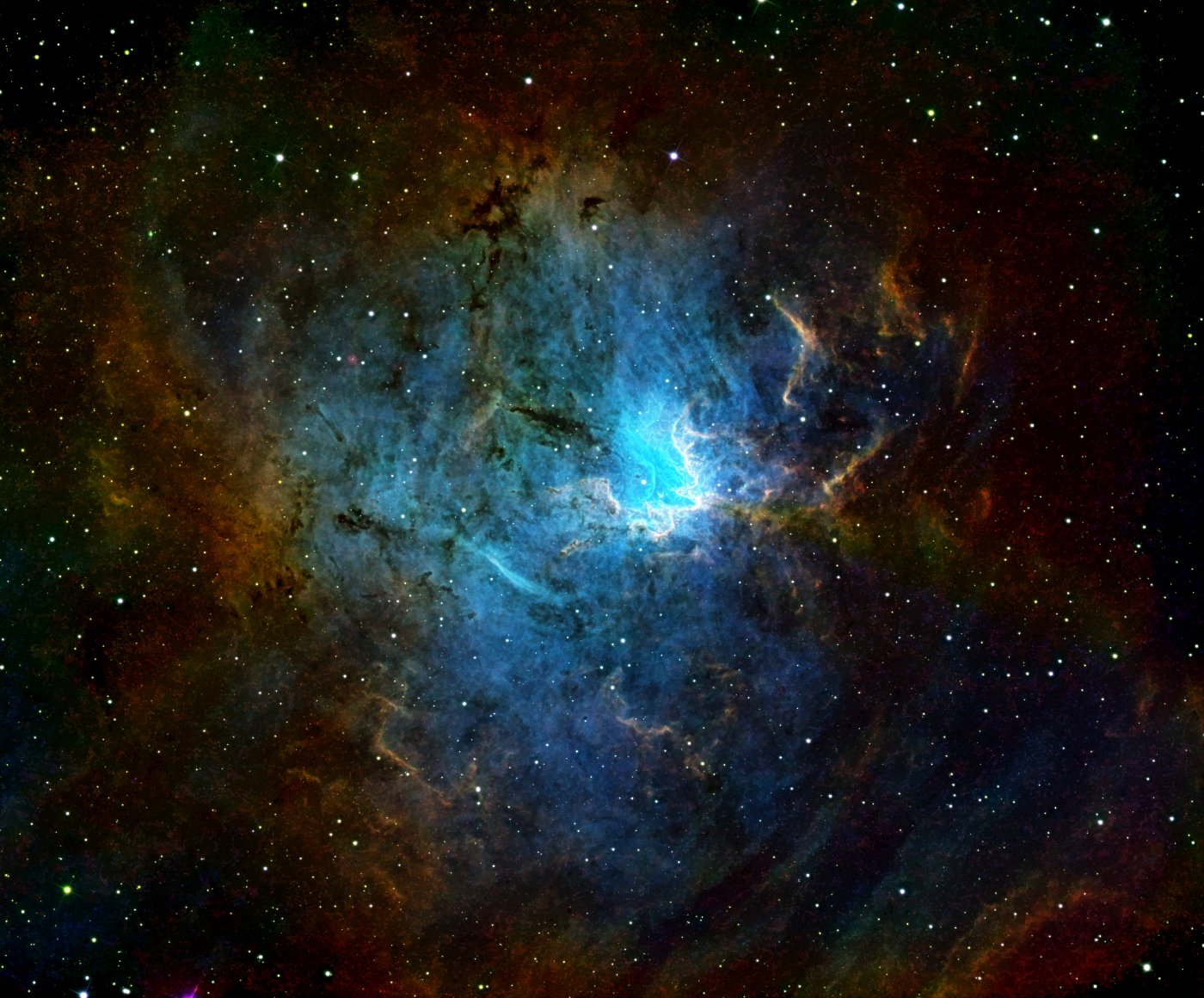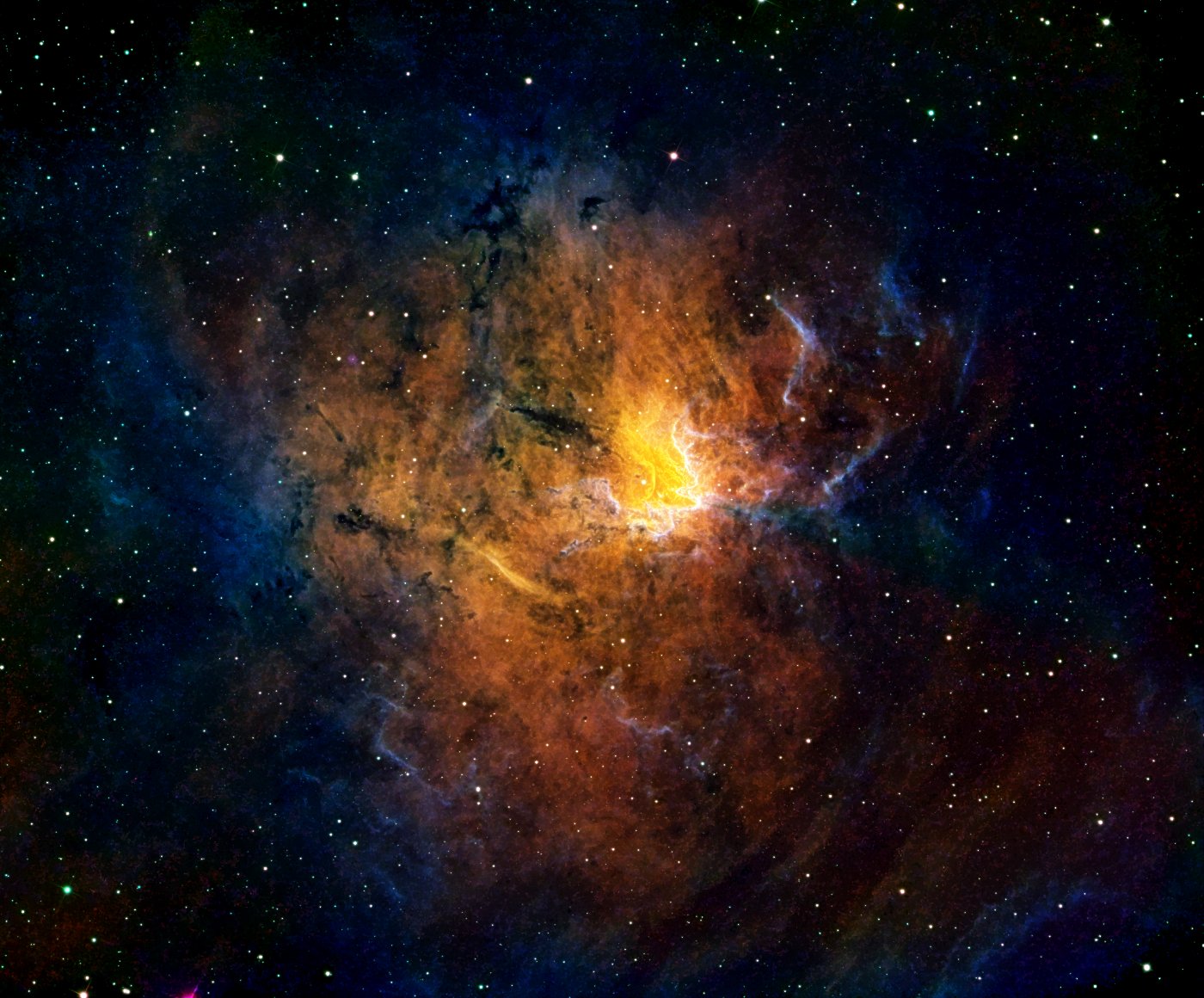SH2-206 (NGC 1491)
SH2-206 (also known as NGC 1491) is an emission nebula in constellation Perseus. The region is ionized by the star BD +50 886 which lies in a distance of about 10,700 ly (light years) from Earth (Gaia DR3 data). The stellar wind of this star interacts with the matter of a surrounding molecular cloud and forms a bubble, similar to the one of the Bubble Nebula but much smaller: about 60" (arcseconds) or 3 ly. The diameter of the ionized region of the molecular cloud is about 100 ly.
Click on the images for a full scale version.
BD +50 886, the ionizing star, lies in the center of the bright region. The bubble is the small oval structure around the star.


Image data
| FOV: | 0.64° × 0.5° (full view) | ||||||||||
|---|---|---|---|---|---|---|---|---|---|---|---|
| Date: | 2019-2021 | ||||||||||
| Location: | Pulsnitz, Germany | ||||||||||
| Instrument: | 400mm Newton at f=1520mm | ||||||||||
| Camera Sensor: | Panasonic MN34230 | ||||||||||
| Orientation: | North is up (approximately) | ||||||||||
| Scale: | 0.8 arcsec/pixel (at full resolution) | ||||||||||
| Total exposure times: |
|
Image processing
All image processing steps are deterministic, i.e. there was no manual retouching or any other kind of non-reproducible adjustment. The software which was used can be downloaded here.Image processing steps where:
- Bias correction, photon counting
- Dark current subtraction, flatfield correction, noise estimation
- Alignment and brightness calibration using stars from reference image
- Stacking with masking unlikely values and background correction
- Extracting stars from the emission line images using information from continuum images
- Denoising and deconvolution both components (stars and residual)
- RGB-composition
- Dynamic range compression using non-linear high-pass filter
- Tonal curve correction